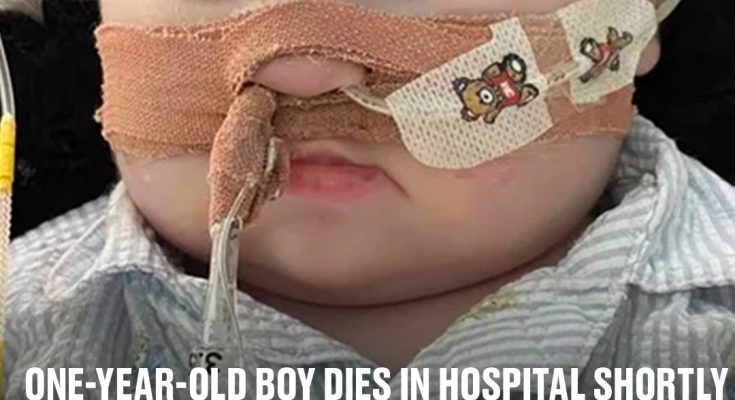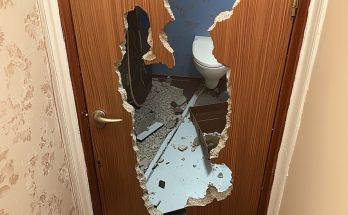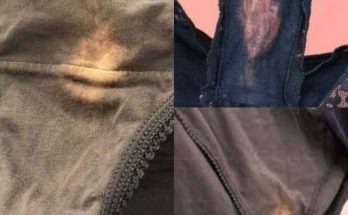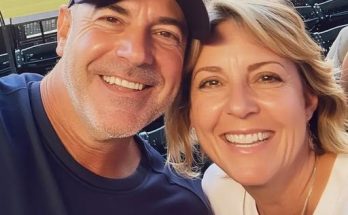A one-year-old boy has tragically passed away after a High Court judge ruled his treatment should end, despite his mother’s desperate pleas.
Ayden Braqi, who had a severe neuromuscular disease, was at the centre of a legal battle over his care when he died at Great Ormond Street Hospital in London on Thursday (14 November).
The youngster was surrounded by family after the mechanical ventilation – which had been keeping him alive – was sadly withdrawn.

Ayden Braqi died at Great Ormond Street Hospital. (Family Handout/PA)
Ayden was cared for by The Great Ormond Street Hospital for Children NHS Foundation Trust. The organisation had asked a judge to rule that Ayden’s treatment should stop, with its lawyers claiming that burdens of treatment ‘outweigh the limited benefits he could enjoy’ from prolonging his life.
In October, the High Court heard how Ayden suffered from a neuromuscular disease described as ‘severe, progressive and irreversible’, for which there is no known cure currently.
The one-year-old was described as ‘cognitively intact’ and could ‘see, hear, smell, feel and enjoy’, despite his condition, the court was informed.
Ayden’s mother, Neriman Braqi, opposed the bid made by the trust, saying that her son could continue to receive care. She insisted he ‘still smiles’ despite his condition.
A ruling was published on Friday following Ayden’s passing, where Mrs Justice Morgan said: “I am satisfied that whilst he can derive comfort and pleasure from the company of his family, the enormous burdens of his illness and the treatments associated with it outweigh even those very real benefits.”

Ayden was cared for at Great Ormond Street Hospital. (Google Maps)
She continued: “Prolonging his life prolongs also for him the burden of bearing those benefits. He has had and I have no doubt would continue to have the very best of care at GOSH.
“I have taken account of the views of his mother that he should continue to have that care and her strong wishes in respect of this application.
“I must however take an objective view of Ayden’s best interests from his own point of view and from the point of view, in the widest sense, of his welfare.”
Mrs Morgan went on to add: “It is lawful and in his best interests for his mechanical ventilation to be withdrawn and to receive such palliative care and related treatment, including pain relief and anxiolytics, under medical supervision as considered appropriate to ensure that he suffers the least distress and retains the greatest dignity until such time as his life comes to an end.”
Ayden was initially admitted to Great Ormond Street Hospital when he was around three-months-old and he remained at the hospital for the rest of his life.
He had been on a ventilator and his prognosis was described as ‘very poor’ by Debra Powell KC, who was representing the trust.
Featured Image Credit: Family Handout/PA/Google Maps
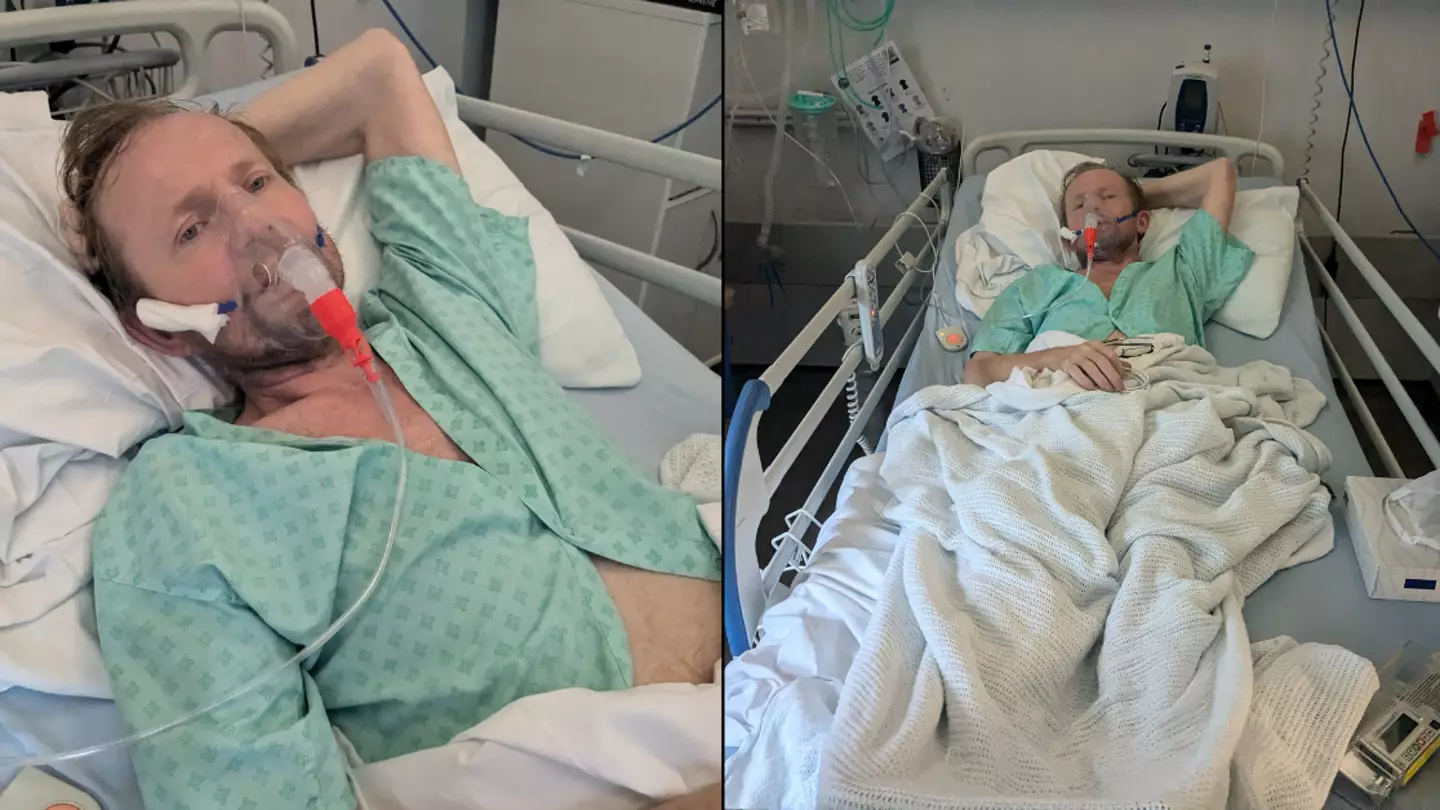
A 48-year-old man who was given weeks to live after inhaling dust from kitchen worktops has warned ‘he’s not the only one’.
Mark Marzec came down with a long-term lung disease after working as a stoneworker in the UK since 2012.
The Polish national is now on his death bed after his health being too much at risk to go through a potentially lifesaving operation.
Angry and distraught, it’s believed the dad-of-three contracted the disease from cutting down kitchen worktops and consequently inhaling a certain type of dust.
The man has been diagnosed with Silicosis, which the NHS say is caused by ‘inhaling large amounts of crystalline silica dust’ over long periods of time.

Marzec says his job has left him ‘unable to breathe’. (SWNS)
This ‘lethal’ stuff can be found in types of stone, rock, sand, and clay that give off dust while being worked.
With weeks left to live, Marzec is taking legal action against his former employers.
The man claims he’s ‘not the only person’ who has been affected like this and says it’s time for ‘urgent action’ to put a stop to these ‘dangerous working conditions’ before more stoneworkers die as a result.
Law firm Leigh Day is representing Marzec and other stoneworkers in this case, as they push for change to health and safety measures.
It’s been highlighted that more safety measures are needed to stop the increasing number of cases of Silicosis, which has apparently taken the life of at least one other stone worker.
Marzec’s solicitor, Ewan Tant, explained if nothing changes, we could see more deaths in the coming years.
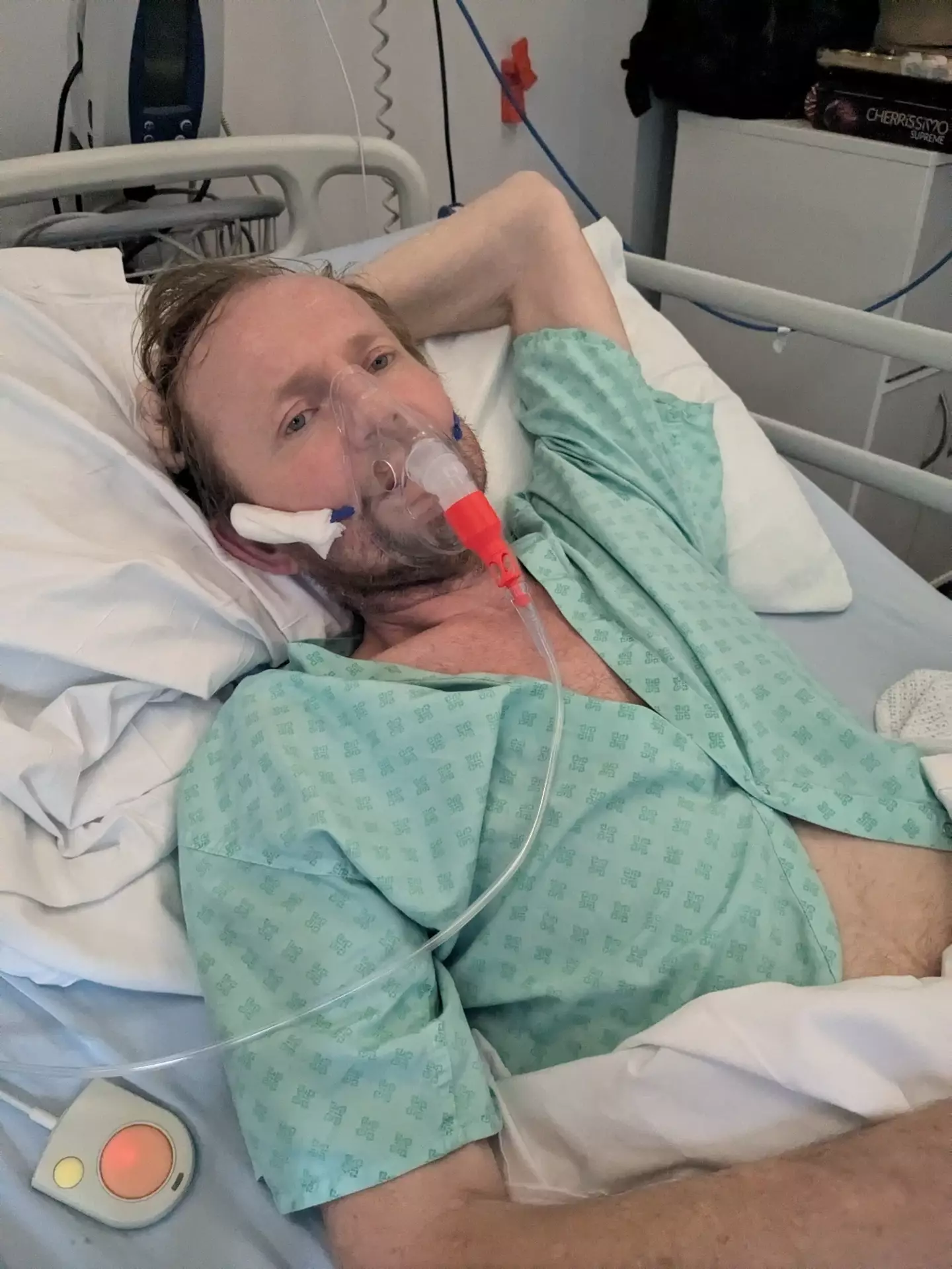
It’s feared other stoneworkers will lose their lives. (SWNS)
He said: “This is a tragic case, with my client now on end-of-life care as a result of working with engineered stone, in what he alleges were appalling conditions, totally unfit for purpose.
“No one should end up facing the bleakest of outcomes simply as a result of going to work.”
Tant said that they are ‘deeply concerned’ over the ‘appalling’ and ‘potentially fatal’ outcomes that could come to reality soon if things stay the same.
Marzec was diagnosed in April this year, with his health deteriorating rapidly due to the disease and is now at a critical point.
He said from hospital: “I arrived in the UK hoping to build a better life and wanting to make sure that my young daughters were financially secure.
“Instead, because of the work I did cutting quartz worktops, I have been left unable to breathe and in terrible pain.
“I cannot tell you how angry I am that I was allowed to work in these conditions and that my life has been cut short simply for doing my job.”
Featured Image Credit: SWNS
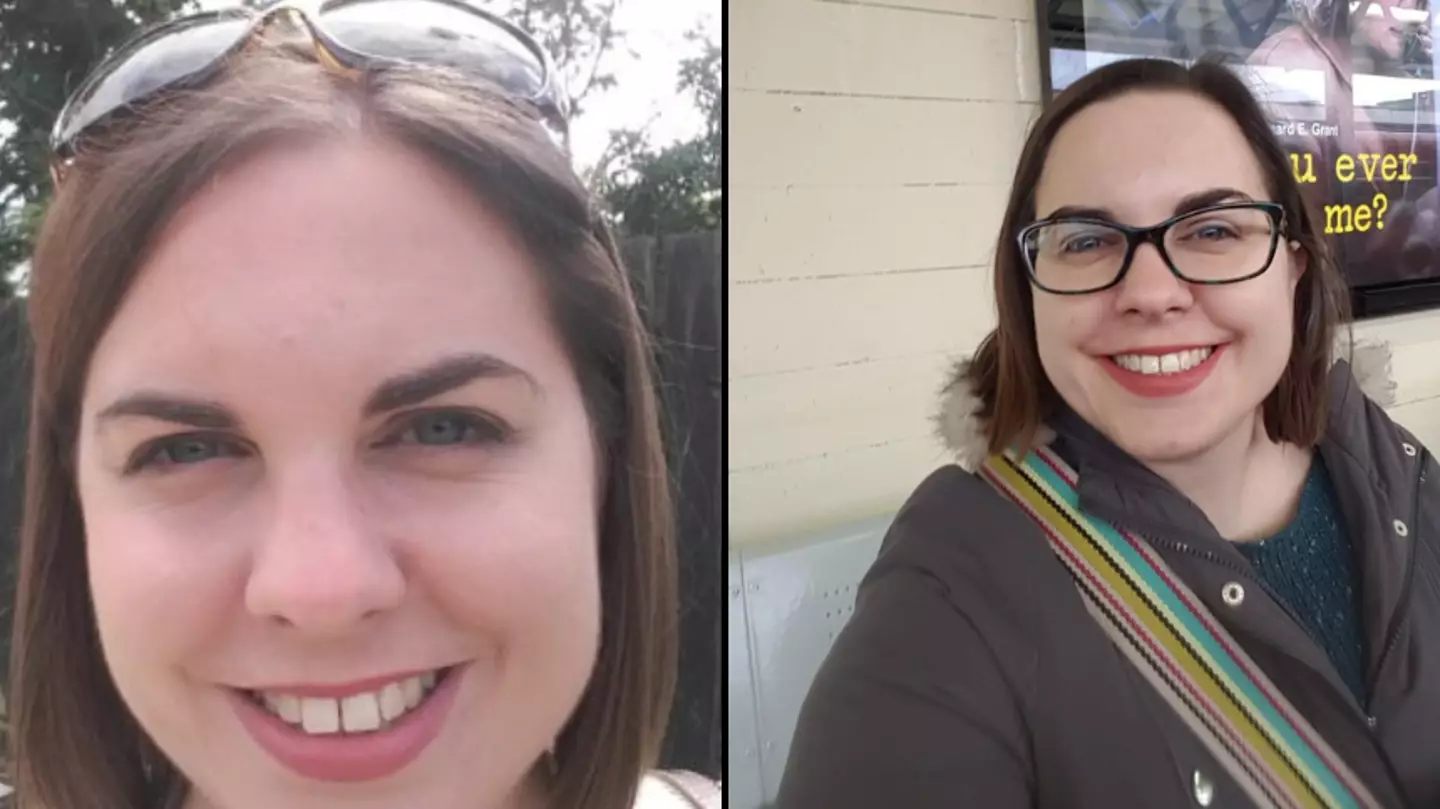
A woman’s life was saved after a horrific discovery following a routine check-up with her optician.
The 40-year-old had no idea that her life would be turned upside down following the eye-test, booking it in before Christmas in 2020 at Boots, as she thought she might need a new prescription.
A CT scan on New Year’s Eve though, gave her a very unexpected surprise.
Caroline Wrixon is a project manager, and found out following a scan at St George’s Hospital in London that she indeed didn’t need a new prescription, but that she had a Grade 2 atypical meningioma tumour, which can grow rapidly, and has the potential to become cancerous.

Caroline Wrixon found something concerning in the CT scan. (St. George’s Hospital)
After finding out, she has since said that she ‘owes her life’ to the ‘brilliant’ team at St George’s, stating: “I’m so grateful to St George’s as they saved my life by acting so quickly.
“The whole team have been brilliant.”
The medical centre has been a brain tumour centre of excellence since 2021, after thorough assessments of the services provided, led by experts.
They measured it against a strict criteria that included clinical practice, training opportunities, patient quality of life, providing clinical trials and the standard of research opportunities.
Run with colleagues at the Royal Marsden and Royal Surrey County Hospital, only eight other hospitals in the country have this recognition.
Caroline is just one of approximately 16,000 people to be diagnosed with a brain tumour in the UK every year, with over 60,000 people estimated to be living with one today.
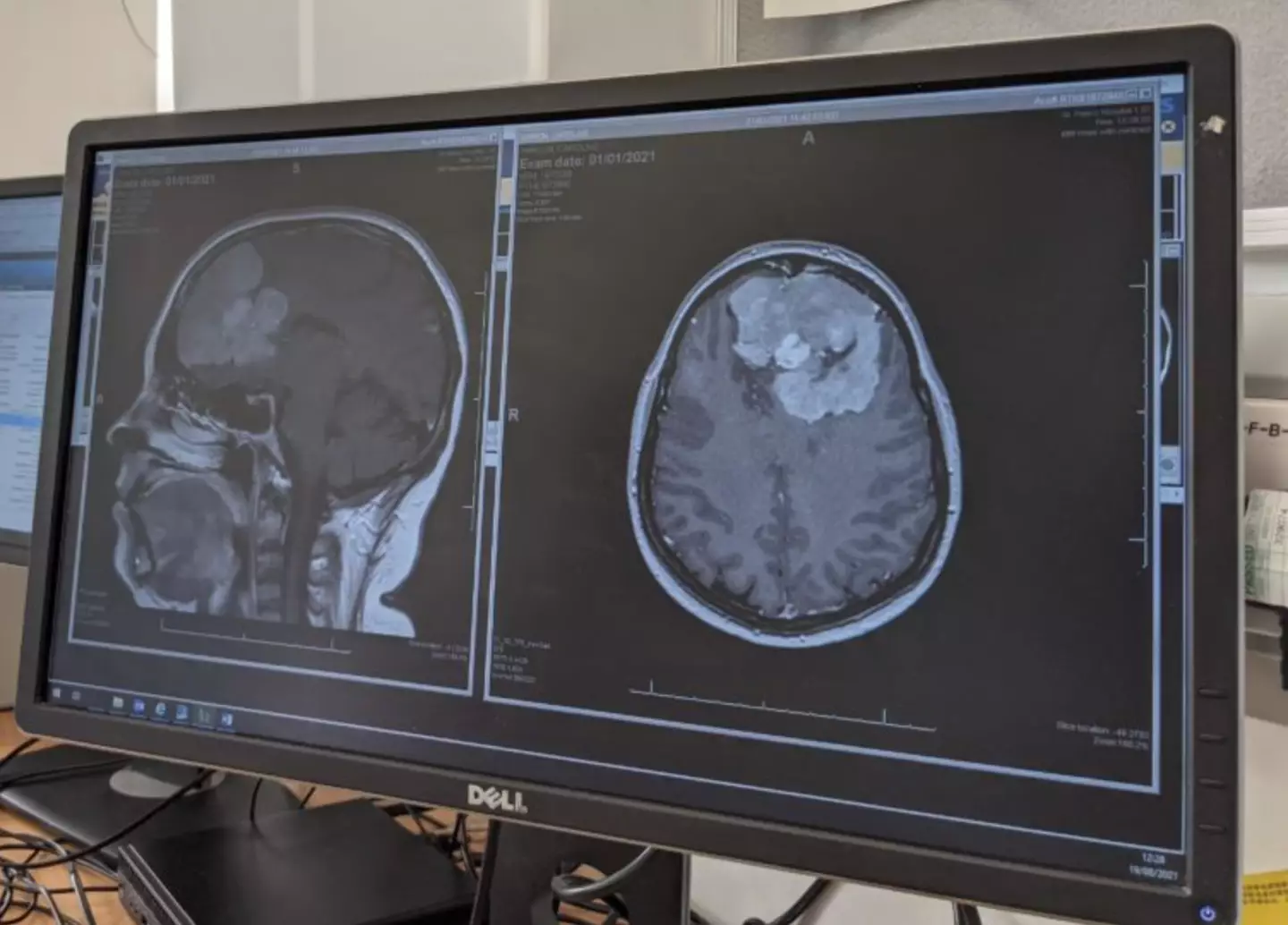
They found a tumour following the CT scan. (St. George’s Hospital)
There are seven common symptoms of a possible brain tumour, which includes headaches and vision problems, among other symptoms.
During her appointment, despite suspecting nothing at first, Caroline said that she felt like there may have been an issue: “I knew something was wrong by the way the optician was going through my eye test.
“In the last part of my test he showed me a house on the screen and asked if the path was straight and it was but when he covered one eye, the path became winding,” she explained.
The project manager revealed that she was ‘overwhelmed’ by the revelation after showing ‘no symptoms’, though she went on to book her life-saving operation at the hospital on 18 January 2021.
“I didn’t have headaches just a slight visual impairment, which I thought was because I needed a new pair of glasses,” she continued.
“This all happened during the second Covid lockdown and the last place anyone wanted to go was to a hospital.
“I had to isolate for 10 days and it was hard for my family as they were unable to see me in person before my surgery.
“I went in on a Sunday afternoon and had the surgery several hours later,” Caroline said.
Following the operation, she was discharged just four days later and went on a course of radiotherapy. She is under the care of Royal Marsden Hospital, where she undergoes regular checks until she gets the green light.
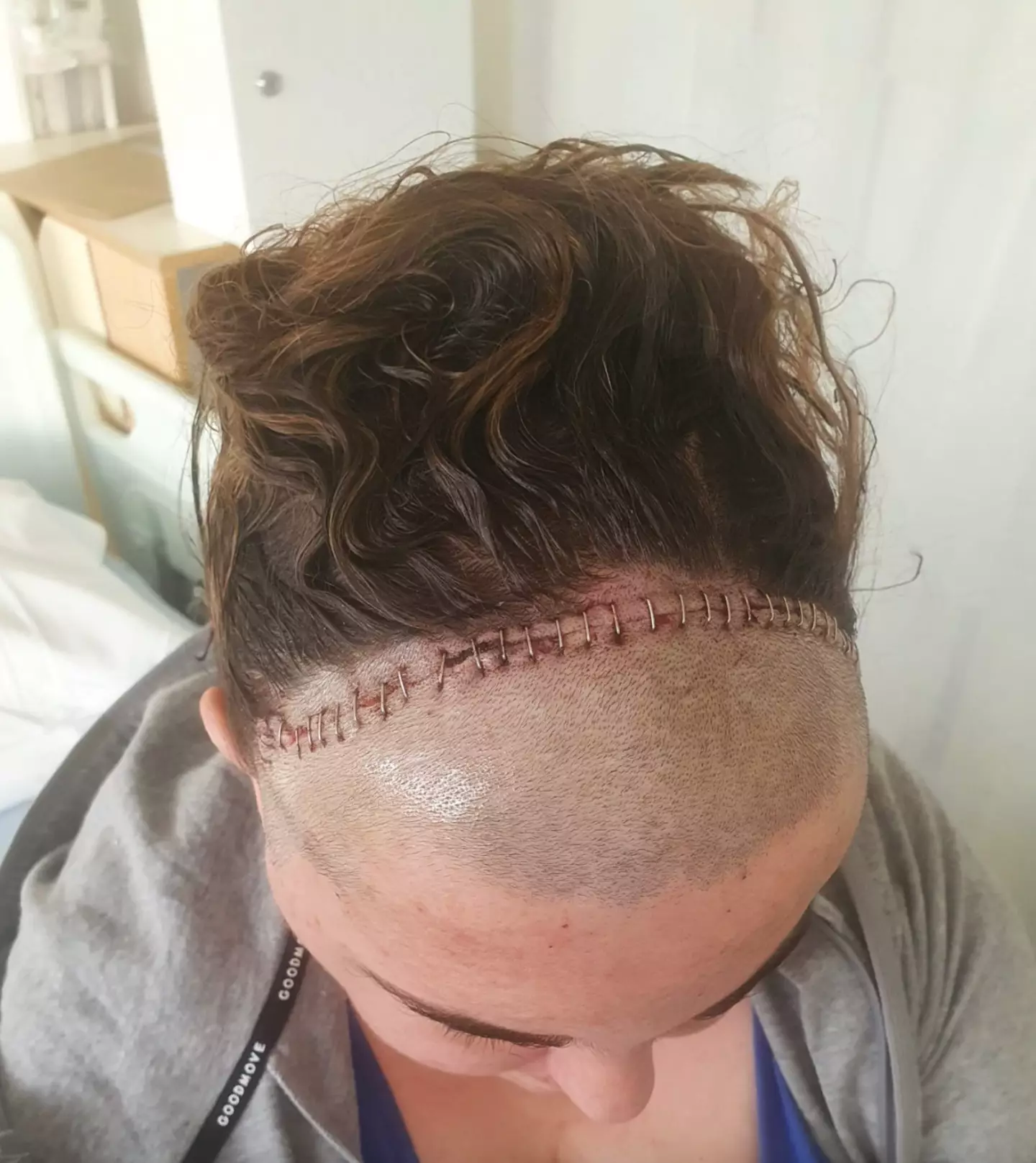
The surgery was lifesaving, but left her with several stitches. (St. George’s Hospital)
Caroline reiterated: “Everyone at St George’s was absolutely brilliant.
“My clinical nurse was fantastic and in fact everyone I have met along this journey from my optician to my surgeon have been good.
“It makes you realise how incredible the NHS is and it is the reason I am alive,” she concluded.
Managing Director at St George’s University Hospitals NHS Foundation Trust, Kate Slemeck, was incredibly proud of the team and their efforts to save Caroline’s life.
“I am delighted our expert and dedicated team saved Caroline’s life,” she began to say.
“We are immensely proud to be a brain tumour centre of excellence and it’s thanks to the hard work of our experienced teams who provide outstanding care to all our patients.”
If you’ve been affected by any of these issues and want to speak to someone in confidence, contact Macmillan’s Cancer Support Line on 0808 808 00 00, 8am–8pm seven days a week.
Featured Image Credit: St. George’s Hospital
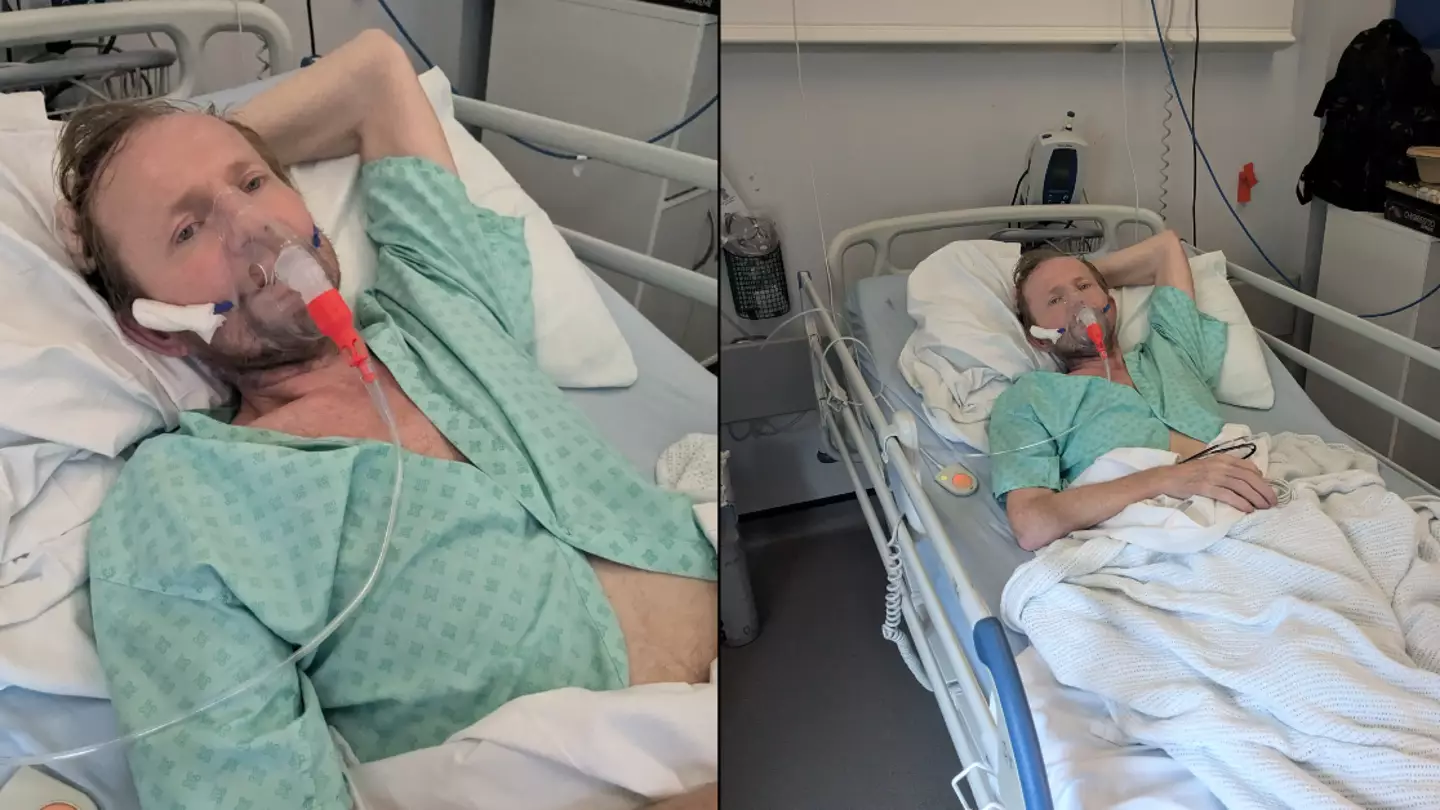
A 48-year-old man has revealed that he only has weeks left to live after coming down with a lung disease caused by his job.
Marek Marzec, originally from Poland, has been diagnosed with a long-term lung disease that he contracted, while working his job of cutting kitchen worktops as a stoneworker in the UK since 2012.
The father-of-three has been left angry and distraught at the situation.
He’s currently on his death bed, as he was deemed too ill to go through a potentially lifesaving operation.
As a result, he is taking legal action against his ex-employers.
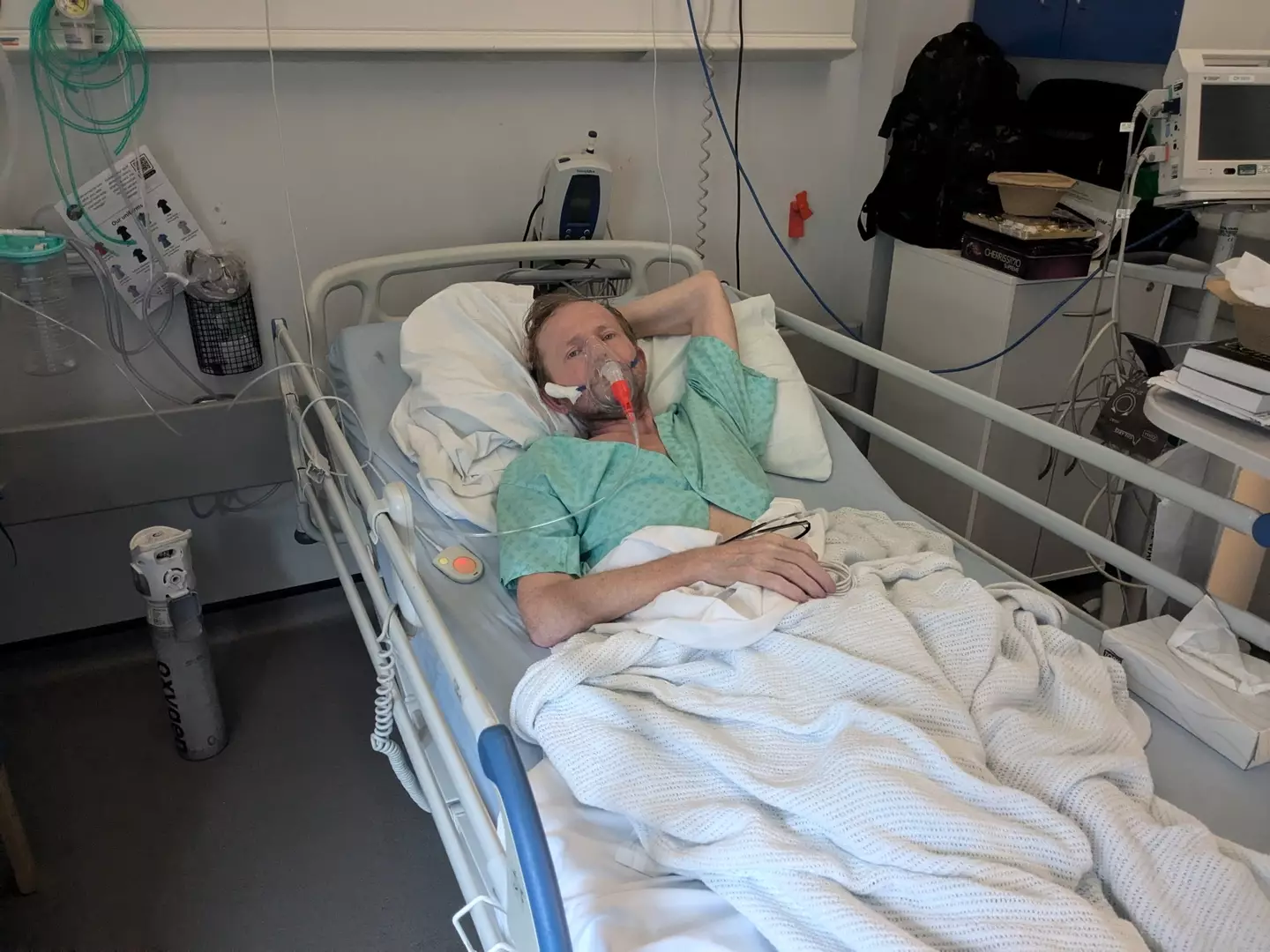
The stoneworker is now on his deathbed (SWNS)
Marzec has Silicosis, a long-term lung disease that is caused by ‘inhaling large amounts of crystalline silica dust’ over long periods of time, according to the NHS.
Silica can be found in types of stone, rock, sand, and clay, that can give off the harmful dust while being worked with.
The dust has been labeled as ‘lethal’.
Marzec is not the only former stoneworker that has been diagnosed with the disease, as he pushes to change health and safety measures around the job along with others.
Law firm Leigh Day is representing Marzec and other stoneworkers in this case, after the Polish man was diagnosed in April this year, before seeing his health deteriorate rapidly as a result of the disease.
He is currently being treated at Whittington Hospital in North London, with occupational lung disease expert Doctor Jo Feary taking care of the 48-year-old.
Marzec’s condition is at a critical point, as stoneworkers with the disease have found difficulty breathing and severe disability – a lung transplant is the only way to treat Silicosis.
Leigh Day has highlighted that more safety measures are needed to stop the increasing number of cases of silicosis, which has cost the life of one other stone worker, at least.
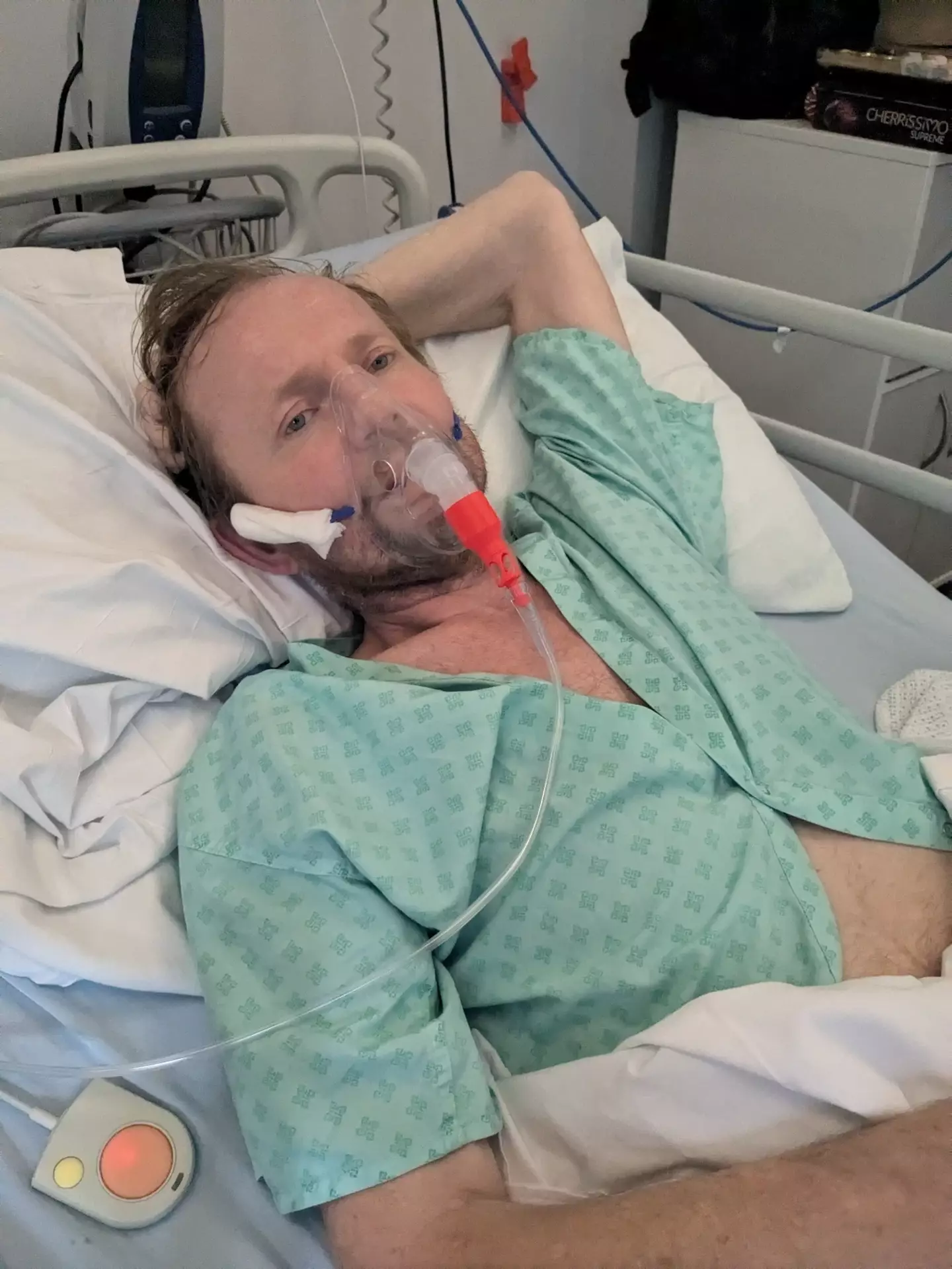
A law firm is taking action to change the health and safety measures for stoneworkers (SWNS)
Marzec’s solicitor from Leigh Day, Ewan Tant, explained that if nothing changes, we could see more deaths in the next few years.
Tant said: “This is a tragic case, with my client now on end-of-life care as a result of working with engineered stone, in what he alleges were appalling conditions, totally unfit for purpose.
“No one should end up facing the bleakest of outcomes simply as a result of going to work,” he added.
The solicitor said that they are ‘deeply concerned’ over the ‘appalling’ and ‘potentially fatal’ outcomes that could come to reality in the near future if things stay the same.
From hospital, Marzec explained the ‘terrible pain’ he had been left in, emotionally admitting: “I arrived in the UK hoping to build a better life and wanting to make sure that my young daughters were financially secure.
“Instead, because of the work I did cutting quartz worktops, I have been left unable to breathe and in terrible pain,” the father said.
He went on: “I cannot tell you how angry I am that I was allowed to work in these conditions and that my life has been cut short simply for doing my job.”
Marzen said that he’s ‘not the only person’ who has been affected, saying it’s time for ‘urgent action’ to put a halt to these ‘dangerous working conditions’ before more stoneworkers die.
Featured Image Credit: SWNS

Warning: This article contains discussion of suicide which some readers may find distressing.
A 21-year-old man diagnosed with a condition so painful it’s nicknamed the ‘suicide disease’ has opened up on what it’s like to live with it.
When Charlie Moore landed a place on a video editing apprenticeship scheme with MTV at the age of 18, he dropped out of college and relocated to London in order begin the course.
However his world would come crashing down during his second year of the course when he began to experience muscle spasms and tension in his right side, which then turned into ‘muscle-ripping’ pain along his right side.
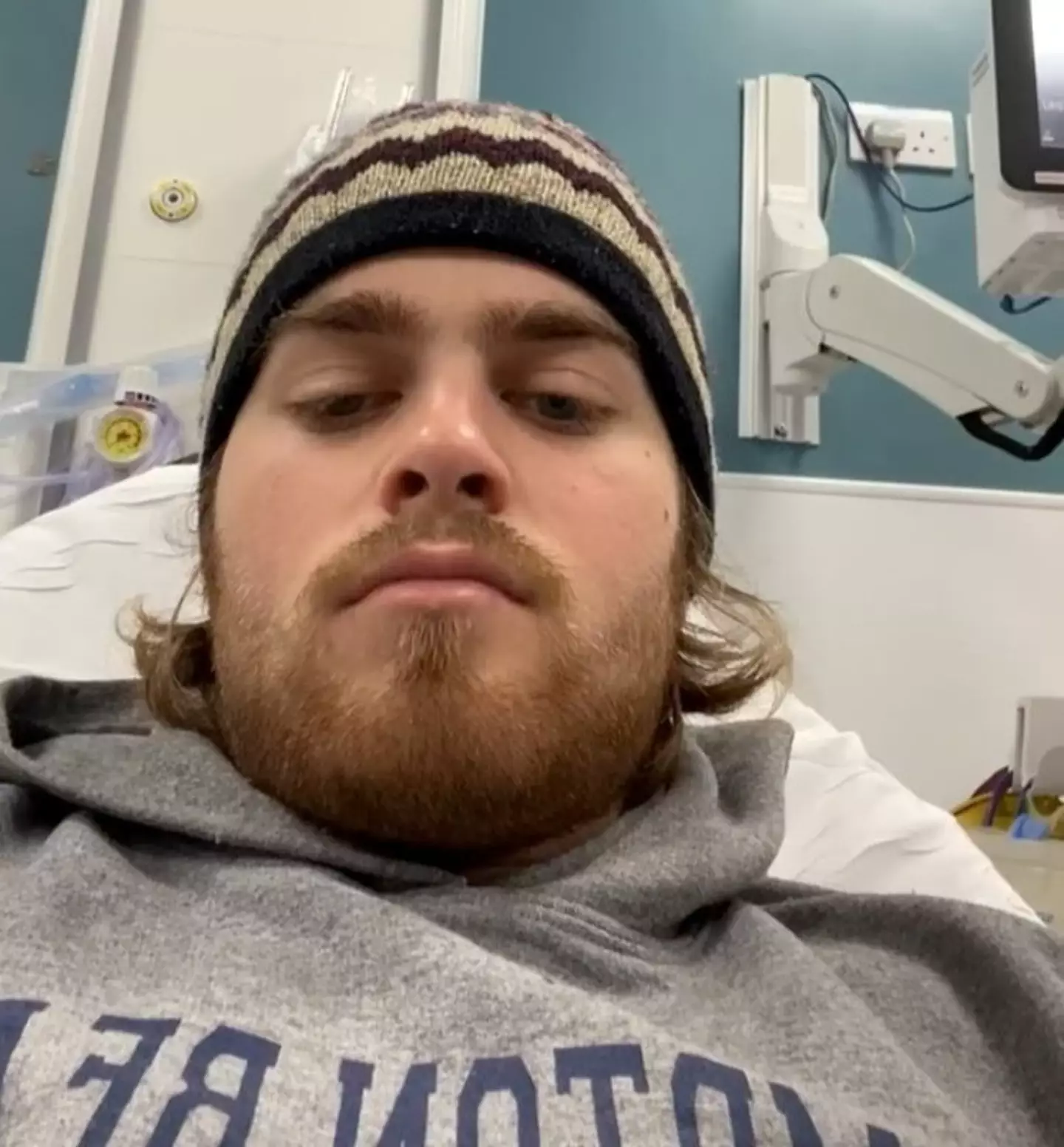
21-year-old Charlie Moore had been looking forward to a career in video editing and filmmaking when he developed the debilitating condition (SWNS)
The pain would become so unbearable that Charlie was forced to drop out of his apprenticeship and move back in with his parents in Frome, Somerset – with doctors struggling to diagnose his condition over the following four years.
The confusion would last until just weeks go, when Charlie finally received a diagnosis for complex regional pain syndrome (CRPS) back in October.
What is complex regional pain syndrome (CRPS)?
According to the NHS, CRPS is a condition in which a person suffers from severe and debilitating pain.
Typically triggered by an injury, CRPS is often confined to one specific limb – however, it can spread to other parts of the body. Symptoms include muscle spasms, difficulty sleeping, intense pain and swelling in the affected area.
Charlie said: “I mainly get it in my right arm, right hand, it spreads all the way up into my shoulders, neck muscles and my head.
“All the muscles pull on each other when they go into spasm.”
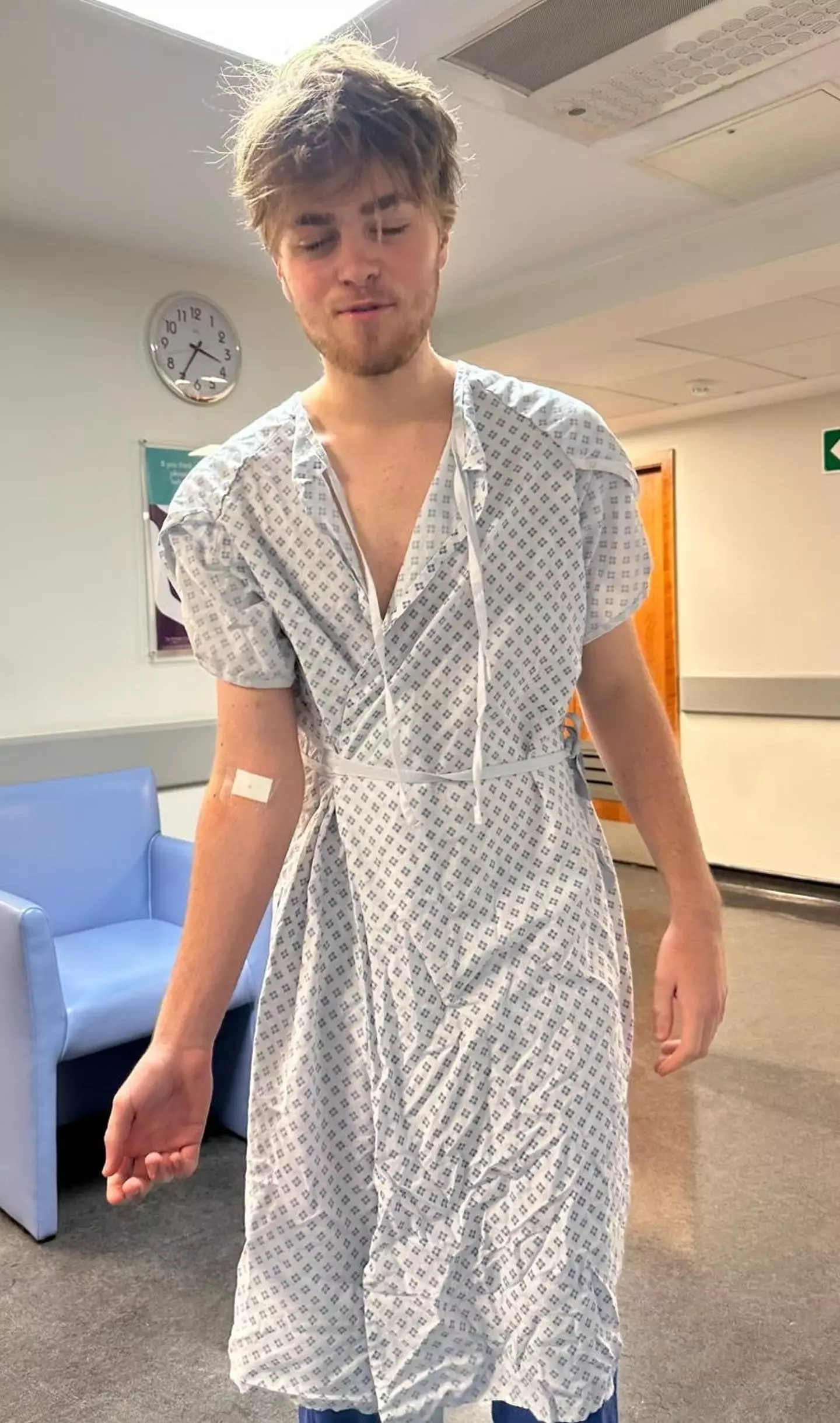
The condition forced him to drop out of his apprenticeship and move back in with his parents (SWNS)
The condition’s other name is referring to some with the condition having suicidal thoughts as a result of the immense pain, the NHS says.
There is currently no cure for CRPS, however, doctors can help patients manage the pain through a variety of treatments.
For Charlie, his treatment will include starting a course of nerve blocks – which involves injecting medicine into the nerves to block pain signal – and physiotherapy.
Some people may show signs of improvement after a couple of years, but sometimes this is not always the case.
For Charlie, he would spend the years leading up to his diagnosis visiting A&E 10 times ‘begging’ for support from medical staff as he struggled with the excruciating pain.
Revealing the extreme measures the pain drove him to, he said: “I thought the pain would go away – but it became so extreme, I ended up attempting suicide.”

Following his diagnosis, the 21-year-old is now hoping the rebuild his life (SWNS)
“It just kept getting worse – I ended up having to drop out of my apprenticeship,” he continued. “I had to move back in with my family.”
Following his diagnosis, Charlie is now living with his parents and receiving £115-a-month Universal Credit and he is raising money to pay for his treatment and live independently via GoFundMe.
“I’m now in a position where I need to be getting back on track with my career,” he added.
“I’ve been able to pay for my nerve blocks with my GoFundMe – but I’m still raising money for some new camera equipment, and to be able to live independently.”
You can find Charlie’s GoFundMe via the link here.
If you’ve been affected by any of these issues and want to speak to someone in confidence, please don’t suffer alone. Call Samaritans for free on their anonymous 24-hour phone line on 116 123.
Featured Image Credit: (SWNS)
